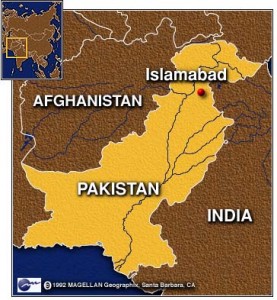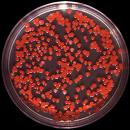 I’m a liberal – I make no bones about it.  I believe women are my equals and that people of all shades and sexual proclivities have the same rights that I do. I believe that governments should exist to serve their people and not merely to maximize opportunities for Capitalists.
I’m a liberal – I make no bones about it.  I believe women are my equals and that people of all shades and sexual proclivities have the same rights that I do. I believe that governments should exist to serve their people and not merely to maximize opportunities for Capitalists.
In short, on most questions, if there’s a liberal and conservative axis, you’ll find me on the liberal end of things.
But, I have some exceptions – places where liberals might shun me.
If an individual’s committed violent crimes repeatedly and is obviously incorrigible, I see no point in the state locking them up and feeding them for the rest of their never-to-be-paroled life.  Terminate them – and let’s move on.  When you’ve got a cancer, you cut it off.
Guns?  I’m not at all sure that we all need military assault rifles.  But, I do like what the U.S. Second Amendment says … and why it says it.  When governments lose their way, citizens need a way to have their say.
Nanny States?  I think they go way too far sometimes.  As the Buddhists say, ‘Everything in balance’.  Laws should be balanced and mete out the same punishments to both the rich and the poor. And victim-less crimes should be recognized as the oxymorons that they are.
And I’m all for cultural diversity – to a point.  If your culture believes that you are one of the chosen or the saved and you also believe that I’m not, or if your culture believes that women belong to men, or if your culture believes in slash and burn agriculture, or female genital mutilation, or in casual and needless cruelty to animals, or that some men are just better than others and thus have a right to rule them, then I think it’s probably time for for your culture to go – sorry.
But, if you like to wear a small square hat and dance outside at the new moon, or paint your house bright red, blue and gold, or if carrying a dagger and wearing turban are your thing, or if you are a strict vegetarian or anything else that doesn’t mess with our common biosphere or with other’s folk’s rights, then good on ya, I say.
We all need to live and let live, honor and respect each other and realize that this small planet belongs to all of us.  If your cultural beliefs deprives some people of their freedoms, if your cultural beliefs are messing the with common environment we and all of our descendants are going to have to share, if your cultural beliefs are all about trying to corner and monopolize money, knowledge, political or military power over the rest of us – then bugger off.  How can I make it plainer?
➡, ➡, ➡, ➡, ➡, ➡, ➡, ➡, ➡, ➡, and ➡ are all examples of what I’m talking about.
What’s this rant about?
So what, you wonder, is this little rant about?  Well, it’s about a couple of things that have come together in the last few days.
Just the other day, The U.S. Secretary of State, Hillary Clinton, pointed out that the government of Pakistan is buckling before pressure from the Taliban.  The most recent and telling example of this was when the Pakistan government ‘allowed‘ the Taliban, who control the Swat Valley and, indeed, much of the northwest of Pakistan, to practice Sharia Law there.  And they, of course, did this hoping that it might result in peace with the Taliban.
Then, just days later, we hear that the Taliban are now taking over areas adjoining the Swat Valley and forcing the people there to adopt the Taliban’s rules and killing or driving off anyone who opposes them.
Mortal Threat
The Pakistani government, in deep denial, is losing ground against the Islamic insurgents and it badly needs to decide which side it is on and get focused.  Clinton said, speaking to U.S. lawmakers, that Pakistan’s government has abdicated to the Taliban in agreeing to impose Islamic law in the Swat valley and the country now poses a “mortal threat” to the world.
I don’t think she’s exaggerating the ‘Mortal Threat’ business.  Pakistan has nuclear weapons (are you paying attention here?) and Pakistan is a weak state literally crumbling before strengthening Taliban insurgent forces.  If that’s not the definition of ‘Mortal Danger’ for the rest of us, I don’t know what is.
Then, finally, a friend of mine sent me the a link to the following video.  I encourage you to stop now, click on the video and then return here to continue reading after you are done.
Click here for the video:Â ➡
Got that? A suitcase full of four pounds of Anthrax?  This guy has very little idea of how to try to get along with other cultures.  And, as someone who considers himself pretty liberal and tolerant, I find myself seriously wondering what we should do about people and movements like this.

Yeah, right!
I have a little movie of my own that plays over and over in my head when I think about this stuff.  It involves a time in our not too distant past when other tyrants were on the loose and wanted to take over the world. Back then, a lot of time was spent trying to appease the beast, trying to see their good side, assuming that if we were nice, they’d be nice to.  And in my little movie, I see Neville Chamberlain getting off the plane from Germany over and over again and proclaiming, “Peace in our Time“.
There’s a nice biography/documentary around about the life of Winston Churchill and it makes your skin crawl to see how very long and hard the British tried to ignore the Nazi monster and how, in the end, it almost cost them their freedom.  And without a doubt, it did cost them the loss of a lot of British lives that were lost unnecessarily because of how trusting and unprepared they were when the German Nazis finally took of their ‘Nice Mask’ and showed the world who they really were.
And here in the U.S., we refused to get involved until the Japanese literally brought the party to our shores and, like the British before us, we then suddenly had to get over our idealism and isolationism and start a massive and desperate game of catchup.
Islam is OK
So, what am I saying here?
 First, let’s be clear.  I am not anti Islam.  Of the many millions of Islamic people in the world, it is only small fundamentalist core which wants to push their agendas by any means possible, who believe that terrorism is a valid tool in their struggle to make the world over in the image they want and who believe their every action, no matter how reprehensible, is blessed by their God. But, I believe that the vast majority of Muslims in this world would simply like to live and get along just like we would.  So understand, please, that it is only these intolerant crazies that I am on about here.
First, let’s be clear.  I am not anti Islam.  Of the many millions of Islamic people in the world, it is only small fundamentalist core which wants to push their agendas by any means possible, who believe that terrorism is a valid tool in their struggle to make the world over in the image they want and who believe their every action, no matter how reprehensible, is blessed by their God. But, I believe that the vast majority of Muslims in this world would simply like to live and get along just like we would.  So understand, please, that it is only these intolerant crazies that I am on about here.
Weapons of mass destruction have changed the face of warfare forever.  The leverage that can be exerted by the use of a biological or nuclear weapon can be totally out of proportion to the size of the group wielding it.  We’re not in the world anymore where we need large armies to fight our conflicts.   We’ve all been very lucky since the end of the Second World War.  Because, in spite of our many conflicts, we’ve managed to keep the nuclear and biological genies in their bottles so far.
But ask yourself, if the Taliban take over Pakistan and gain control of the weapons there, do you think it is going to turn out well for us?
Yes, I’m a liberal – but I have limits and I think for our own survival, we all should have limits.
If we think we can cure the cancer of radical Islamic fundamentalism, then by all means, we should try.  But, if we don’t think we can cure it, then we are only wasting valuable time while it spreads and becomes more and more intractable.
What should we do?
That’s a tough question. But, while we think about it and consider various half measures, those who want to destroy us and make the world over into a prison of intolerant fundamentalism, wherein women are property and human rights are irrelevant and where we all have to worship as they tell us or die, are moving inexorably forward towards the possession of nuclear and biological weapons.
This is not a place we can allow history to go.
Their culture is toxic to our future and to the future of a world based on multiculturalism, tolerance, sustainability, science, democracy, religious freedom and human rights for everyone.  They want to take us back to the 7th century – and I, for one, don’t want to go.
In truth, I don’t know what we should do nor when we should do it.  But I see what some have called a ‘clash of civilizations‘ coming.
Some folks think that there must be something more we can do to defuse their animosity.  But, when I look at the deep roots of why they do what they do, I despair that there’s more we can do – save move forward to the final chapter in this story of human history. The chapter in which we realize that there can be no reconciliation with a blind faith determined to convert the world to its vision or die trying.  A chapter in which we see, finally, that they will keep coming at us relentlessly until they have either won or until their vision of Islam is extinguished from the world.
We are too nice for our own good.  We will wait and wait, hoping for a way out of this quandary, and all the while we’ll be risking that they will acquire deadly weapons of mass destruction.  We may, in our tolerance and goodness, wait too long and suddenly find ourselves in a very desperate world.
But if they cannot be turned from their course, in the end, we will, we must, use whatever force it takes to eliminate their threat to our survival.  In the end, we’ll recognize that if human civilization has a cancer and we want to advance rather than regress, then the cancer must be cut off for the greater good of the whole.
These are tough thoughts for a liberal to espouse.  But, if you’ve got better ideas, I’d love to hear them.
———————————————



